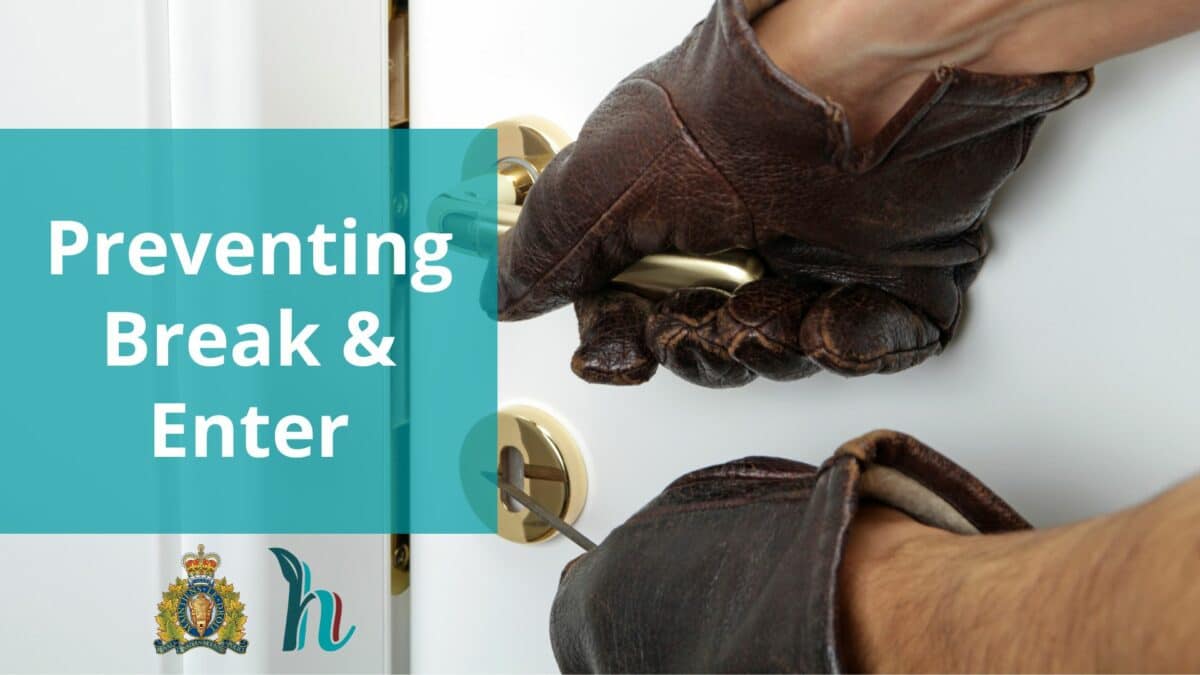
Often, I am approached for guidance safeguarding against burglaries and enhancing the chances of retrieving stolen goods. Here I will share strategies that you can use to prevent being a target and stop break-in attempts.
These strategies are based on four core principles. Deter, Impede, Alert and Summon. The goal is to deter burglars outright, impede their break-in efforts, alert you or others of their presence, and swiftly summon the police to the scene. Last week, I offered some tips on Deter. This week, let’s look at Impede.
Impede
In this week’s edition of our home security series, we turn our attention to the principle of impeding break-in attempts. Discover practical methods to fortify your home’s entrances and make forced entry difficult for intruders. Strengthening these vulnerable points is essential in enhancing your overall security measures.
Strengthen and secure the entrances to your home – With unlimited time and tools, any home can eventually be entered; the key is to make forced entry to your home so slow and difficult that the risk of detection or capture becomes too great, forcing a burglar to move on. Burglars will look for a way to enter that minimizes noise and visibility. This generally means avoiding the street-facing entrance and going to the back of the property, where witnesses are less likely to see them.
The most preferred method of entry is an unlocked door (which is unfortunately common), followed by an unlocked, low-level window. If there are no unlocked methods of entry, a door kick is typically utilized because it can be done relatively quickly, and the noise of a single kick to a door is less likely to attract attention than breaking glass. Glass breaking can also lead to the offender cutting themselves and is therefore typically avoided.
Having lighting on at night around entrances can bring further attention to the home and make it more likely that a burglar will be seen by witnesses and neighbours.
Because all residential doors open inwards, anything that you can do to strengthen your doors against a kicking attempt will help prevent or greatly slow an offender’s entry. On occasion, I have had the necessity to assist in medical rescues at residences that required me to force entry to a door, and it can be surprising how easily many doors can be entered with a single kick.
What stops (or at least radically slows) a kick-in attempt is a combination of the lock quality and the door’s material, its hardware, and the door frame. The lowest quality exterior door locks (3rd Grade ANSI) are rated to only withstand two strikes of 75 foot-pounds of force, whereas the highest rated locks are required to withstand ten strikes. Switching to a higher quality lock is therefore one way to improve your door’s overall protection.
Even the best lock system will fail though if the door frames strike plate – the piece of metal that accepts the dead bolt of the lock – is inadequate. A larger strike plate will have more metal and more screw attachments to defend against the force of a kick. Lastly, replacing the screws of the strike plate and the door hinges with longer ones so that they extend into the door frame further is a very inexpensive way to greatly upgrade your door against kick attacks.
A door with glass should have its glass protected with the addition of an inexpensive D.I.Y. security film to protect the glass from easy breaking and reach-through to the other side of the lock. If you have an outward-opening glass storm door in front of your main door, locking the storm door provides a large deterrent to kicking attempts, since most burglars don’t want to make glass breaking noise nor put their foot through storm door glass.
Next week, I will offer a nightly routine that any resident can adopt to deter and impede break and enter attempts.
Sergeant Rob Welsman
Hanna Detachment Commander

